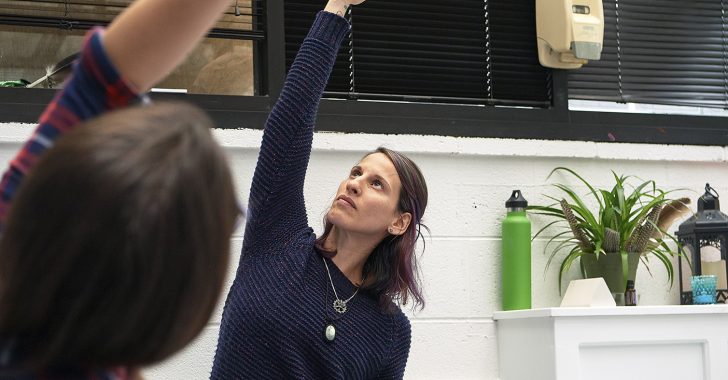Q&A with a Therapist: Wellness Specialist Irma Sciarra on Mindfulness
Irma Sciarra is Eagleville Hospital’s Wellness Specialist, who brings her background in human services, yoga and meditation to the recovery setting. We asked Irma to describe how yoga and meditation are helpful to people in recovery and what she recommends for anyone who wants to benefit from these practices.
What do you offer Eagleville clients?Most of my day consists of working directly with the individuals we serve. We have a meditation group on the detoxification units, where mobility is limited. For other clients, we offer a mindfulness meditation and yoga group that lasts up to an hour. All individuals are provided an opportunity to engage in the services.
There are separate groups for men and women, and multiple classes a week for both groups. A typical class may consist of the practice of sitting meditation, engaging in some gentle stretches and some quiet time at the end. At times, a reading about mindfulness or yoga philosophy may be included to provide education on mind-body philosophies.
What is the mind-body relationship, and why is that important in recovery?Nourishing and providing healing for the self as a whole is essential. The body contains current feelings and moods, tension and discomfort, life experiences and past traumas. The practices of mindfulness meditation and yoga could be viewed as building stability and comfort for the whole person inhabiting a body.
The experience of yoga and mindfulness meditation may be unique to the individual. But in general, these practices are balancing to the nervous system, which can help someone struggling with anxiety, post-traumatic stress disorder or hyperactivity. The process of recovery yoga and meditation can be a helpful tool to bring one back to self, allowing them to inhabit the body a little more gracefully.
How do you prepare clients to not escape when painful things arise?Ultimately, we can’t escape ourselves, but sometimes we engage in behaviors that make those problems bigger down the road. Meditation and yoga can assist with building a different relationship with the things that there may be an urge to run from.
The healing process is about change in small doses, being mindful of personal limits and edges and having access to a highly supportive environment and a space to be accepting and curious. This can shift the person’s reaction to feelings triggered or the experience of a painful memory.
What is mindfulness meditation, and how does it relate to yoga?In my thinking, yoga, mindfulness and meditation can be similar practices of increasing self-awareness. Engagement in any of these practices is a commitment to inhabit the self for a period of time. Whether this is done by sitting still and focusing on the breath, stretching the body or by listening to someone and noticing personal reactions, it’s all a form of that commitment.
What do you say to people who believe they need to be flexible to be successful at yoga?I would be unsure on how to measure or define success. In my experience yoga provides a space to explore the physical form and get to know the body and listen to the sensations and any guidance that may be offered. If someone struggles on the surface in yoga class, that’s great! Personal humanity, self-doubt and daily discomforts have now shown up in a space where they can be acknowledged. That’s so beautiful.
Mindfulness practices have become trendy in recent years. Do you find that people have a lot of misconceptions about these practices because of that? I have found expectations to be a regular part of the thinking, problem-solving mind, and I don’t think it’s a bad thing to have expectations. Being aware of what you think about something is a practice in and of itself.
For example, if there is a thought that yoga is about flexibility and this impacts the experience or willingness to try, that may provide a lot of information about the practitioner’s perceptions, fears and worries. These personal discoveries provide so much information on how the person views the world.
What do you recommend for people in recovery who want to try mindfulness but aren’t sure where to start?Many of these practices are an internal process. The key is to find what resonates with the unique individual in providing the most healing and welcoming space. Group classes and instructional videos are an option. Additionally, mindfulness can be as basic as stretching your body in the morning and paying attention to how that feels. Or pausing for two minutes in the middle of your day to deepen your breath, taking a moment to identify and be with an emotional state, or stopping to provide some self-nourishment.

